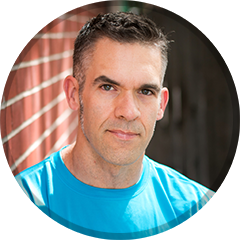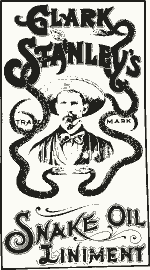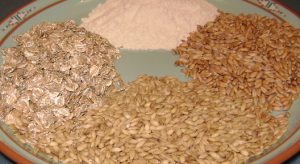Choices to make: strength or endurance?
I feel fantastic these days. My varied lingering aches and pains are dwindling to fleeting annoyances. I actually feel like some sort of athlete! And now my mind turns to various athletic goals. I have strength goals–pulling 500 lbs. on the deadlift, mastering the barbell snatch, and cleaning and jerking my body weight (at the very least) for instance. I also have endurance goals such as running a marathon and doing the Epic Single Track mountain bike race series at Winter Park next year. I want to do it all! But as I’ve mentioned before (here and here) it’s not realistic to pursue both high-end strength and endurance goals at the same time. If you work hard enough in one direction, then your abilities at the other end will suffer. From the injury and burnout perspective, doing a lot of endurance work plus heavy strength/power work will very likely put you in a bad spot very quickly. So I’ve got to choose, and it’s a tough call.
Short-term reward vs. long-term benefit
I mentioned previously that getting stronger helps one’s endurance abilities but it doesn’t work the other way. Increasing one’s endurance work tends to make one weaker. Further, dropping weight via dropping muscle mass makes running and biking much easier. Hauling around extra weight never helps. The whole idea of losing strength and mass is sort of tough to swallow. But if I continue to lift to the degree that I’ve enjoyed–then I’ll impede to my endurance abilities.
As I’ve thought about all this, I realize I’m facing the sort of dilemma faced by many of us who want to get in better shape. The issue boils down to a short-term reward vs. a long-term goal. We know in some part of our brain what we should do, but in some other part we desire something else in the here-and-now. We’d like to be thin some day for example but a bowl of ice cream is looking mighty good right now. Or maybe I’d like to have more muscle mass and better bone density, but I really feel like watching TV right now. Does this sound familiar? In most cases, the short-term reward wins out. This can be a titanic struggle at times. It’s you vs. your brain!
Add weight to be strong.
One of the most respected and knowledgeable strength coaches in the country is Mark Rippetoe, owner of the Wichita Falls Athletic Club, and co-author of the books Starting Strength and Practical Programming for Strength Training. (If you want to get stronger, stop reading right now and order both books. They are superb.) If he’s talking, I’m listening. Recently, I watched a video from his site about tall athletes. (I’m 6’3″ and that qualifies as reasonably tall.) It’s a forum discussion with Rippetoe, former Olympic weight lifting champion Tommy Suggs, big time powerlifter Jim Windler, and strong man/nutritionist John “Johnny Pain” Shaffer. An audience member asks about training concerns for tall athletes. (See, tall people have long limbs or levers. Long levers can’t move as much weight as short levers. Thus we tall people have a few questions sometimes on what we should do to get stronger.) The discussion moves to eating and body weight. Shaffer recommends one weigh 3 lbs. per inch of height–as a starting place— in order to be able to use your levers effectively. For me that’s 225 lbs. Right now, I’m just about 200 lbs. Here’s the video in case you’re interested:
Roundtable: Tall Athletes from stef bradford on Vimeo.
Roundtable: Tall Athletes from stef bradford on Vimeo.
Weigh more. Go slow.
So, to be strong–really strong–I should eat to get big. But the creator of the universe is a comedian and he or she has dictated that if I’m big I’ll also have a really hard time running very far or biking up through the beautiful Rocky Mountains of Colorado. It’s obvious: As body mass goes up, endurance performance goes down and vice versa.
I’ve had personal and dramatic experience with this sort of thing. Back in college I went to Europe for four weeks to take “classes.” (It was a vacation disguised as school. Had a wonderful time!) At the time I was riding bikes with a group from a local bike shop in Denton, TX. I didn’t touch a bike while overseas. I ran a lot. I lifted a very few times and I walked constantly. I dropped about 1o or 15 lbs without thinking about it. I got back to TX and the next time I rode I smoked everyone but the very fastest rider in the group. So I became a much better cyclist without improving my cycling skills. The weight made the difference, and this shouldn’t surprise anyone. Here’s some more evidence.
An article on Peak Performance Online cites a study from the University of Georgia that compared run times of men vs women. Part of the study had the subjects perform a 12-minute run test. Here’s a discussion of the results:
“Males did significantly better on the test, running an average of almost 3300 metres in 12 minutes, while females covered just 2750 metres. Although male performances were about 20 per cent better, males didn’t run more economically than the females, and male V02max values were only slightly (5 per cent) higher. What caused the big difference in performance?”
“As it turned out, percent body fat averaged 20 per cent in the females but only 11 per cent in the males. When Sparling analysed the data, he found that 74 per cent of the variation between male and female performances could be accounted for by the difference in body fatness, while a much smaller amount (20 per cent) of the difference was determined by the males’ higher V02max values. The higher amounts of body fat in the female runners acted as ‘dead weight’, increasing the energy cost of running and making quality running paces seem more strenuous.”
Now, clearly fat and muscle are different types of tissue, but too much muscle will still count as “dead weight” during a ride or a run. So the debate in my head continues. Fortunately, as I’ve eluded to before, strength work does help endurance athletes. So as it stands, I can still get a lot stronger and improve my endurance performance. The downside is that I will not reach my genetic potential in strength so long as I continue the endurance activity. I’m also going to focus on reducing my body fat. I don’t carry too terribly much body fat but I also don’t work much to reduce it, and I probably should.


